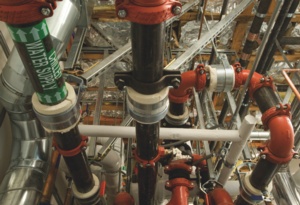Understanding the role of the commissioning manager

Accepting the benefits of commissioning at an early stage in a project and appointing the key people at that stage is essential to ensure those benefits are actually delivered. Nick Till takes up the case.
Commissioning is still considered by many as a single, minor activity in the construction process which needs to be done at some point prior to handover. The most common question asked is, ‘Why do we need a commissioning manager at all?’
There is also a number of contractors which cannot accept that the time that has been identified for pre-commissioning and commissioning cannot be compressed or carried out on incomplete systems. The ‘If it takes one man 10 days to dig a hole, then it will take 10 men only a day to complete the same task’ attitude still persists in relation to commissioning — despite the efforts of the specialists in the industry.
The Commissioning Specialists Association (CSA) celebrated its 20th year of activity in 2010 and has made great strides in enhancing the profile of commissioning and the role played by a commissioning manager.
Commissioning management was born out of the very need to ensure works are managed and handed over on time, but has come under pressure on a number of fronts. All too often this role is identified too late on the project, resulting in a half-hearted attempt to meet legislation with people who are unsuitable or under-skilled to effectively carry out the work. All that is achieved is a building being pushed over the line with systems not fully tested or configured as required in the design.
In reality, to get optimum performance from building services the client must set out clear employer’s requirements (ERs) in a planned and detailed programme that identifies the key tasks from specification, through construction and commissioning, and into post-occupancy aftercare.
There is a distinct need for more independence, which can be addressed by appointing two key people. The first of them is the commissioning validation engineer, who is employed directly by the client and ensures ERs are closed out. The second key person is the independent commissioning manager, who manages and co-ordinates all the site activities on behalf of the contractor.
The role of the commissioning manager should be identified in the contract at the outset. At the very beginning of a project a commissioning plan (as the Building Regulations note) and strategy, which includes a risk schedule, need to be created and embedded in the contract through ERs and forms an essential part of the handover process.
It may also be advisable to employ a commissioning supervisor to bring together the activities of the more sizable packages in the mechanical and electrical works.
The input of these specialists is very important in ensuring that the system design is commissionable (an invaluable and ultimately money-saving activity) by ensuring all the ERs are completed and signed off — thus avoiding design changes to the system after installation and handover, which are costly and time consuming.
A framework for handing over a building has been championed by BSRIA. Called ‘Soft landings’, this framework identifies a process that helps the transition from handover to occupancy and increases the time span of the commissioning activities.

Effective commissioning also has a key role to play in delivering low-carbon buildings, and the CSA has recently assisted the Carbon Trust in a study for the commissioning of such buildings.
A low-carbon building is a living entity, and changes in use and conditions will require adjustment on a continual basis to maintain maximum performance and efficiency.
To achieve the low-carbon requirements, commissioning does not stop at practical completion. This concept is now called ‘continuous commissioning’. Its development is still in the early stages, and a defined brief or document detailing its benefits and strategies has yet to be formalised.
The Commissioning Specialists Association (CSA) has set out to achieve with the re-writing TM1* (the standard for commissioning services installation and beyond handover) with a view to incorporating these areas and introduction of its technical forum CSA (www.csa.org.uk/ forum) where shared knowledge and experience can be tapped.
To achieve a smooth and trouble-free building handover we need to have the correct contract conditions (ERs) and work carried out by knowledgeable and experienced staff who are engaged throughout the construction process up to initial occupancy so they can help the building performance to be optimised effectively and maintained at the optimum level.
We must not forget the quality of documentation that supports this in terms of commissioning results, O&M and log books
Nick Till is chairman of the commissioning specialists association and
managing director of Banyard Associates.
* TM1 is CSA’s ‘Standard specification for the commissioning of mechanical engineering services installations for buildings’








